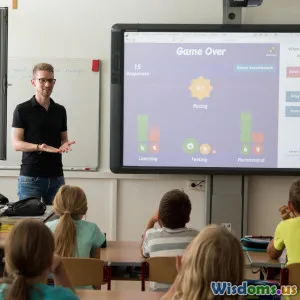
Is Memorization Still Relevant in Modern Learning Strategies
8 min read Explore the evolving role of memorization in modern learning and why it still matters in today’s education landscape. (0 Reviews)
Is Memorization Still Relevant in Modern Learning Strategies?
In an era dominated by technology, instant information access, and innovative educational paradigms, it’s tempting to question whether traditional memorization holds any real value. With smartphones, search engines, and AI at our fingertips, does memorizing facts or concepts still matter? Or has memorization become an outdated relic of rote learning overshadowed by critical thinking and problem-solving skills? This article explores the evolving role of memorization in modern learning, presenting evidence and insights that illustrate its irreplaceable role in cognition and education.
The Historical Context of Memorization in Education
Memorization has long served as a foundational learning method. From ancient oral traditions where knowledge was preserved through repetition, to formal schooling systems relying on memorizing facts and formulas, memory training was often synonymous with education itself. For centuries, students recited poetry, historical dates, multiplication tables, and philosophical doctrines to lay the groundwork for deeper thinking.
However, critics argue that memorization promotes superficial learning and stifles creativity, leading to a push for active, enquiry-based, and constructivist learning approaches in recent decades. But this raises a central question: Is memorization inherently opposed to critical thinking and creativity, or is it an essential supporting process for them?
The Cognitive Science Behind Memorization
Memory isn’t a mere repository of information but a dynamic system that allows us to learn, reason, and innovate. Cognitive psychologists distinguish between working memory—the workspace for processing new information—and long-term memory, where knowledge is stored for later retrieval.
Memorization, when effectively implemented, helps transfer information from working memory into structured long-term memory. This is critical because our cognitive resources are limited: by automating recall of foundational knowledge, learners free mental capacity to focus on complex problem-solving.
Example: Medical Education
In medical training, students must memorize vast amounts of information—anatomy, drug names, physiological processes—to competently diagnose and treat illnesses. According to a 2016 study published in Medical Education, students who actively engaged in memorization techniques retained medical knowledge more durable and applied it more effectively in clinical settings, underscoring its relevance.
Integration of Memorization with Modern Technologies
Far from being eclipsed by technology, memorization can be enhanced by it. Tools such as spaced repetition software (e.g., Anki or Quizlet) utilize principles of cognitive science to optimize memory retention over long periods. These platforms schedule review sessions precisely when memories are about to fade, generating efficient learning curves.
Meanwhile, ubiquitous internet access supports a blended approach: foundational facts are memorized for automatic recall, while deeper exploration and contextual understanding leverage online resources. This complementary relationship allows for both speed and depth in learning.
Memorization in the Age of Critical Thinking and Creativity
Memorization is often misconceived as mindless rehearsal. In reality, it provides the building blocks for higher-order cognitive abilities:
-
Critical Thinking: When core facts and frameworks are well-memorized, learners can analyze and evaluate information more quickly without being bogged down in retrieval.
-
Creative Application: Numerous studies, including one from the Journal of Experimental Psychology (2017), show that creativity often involves recombining known elements stored in memory to generate new ideas.
For example, expert musicians memorize scales and chord progressions, enabling them to improvise spontaneously during performances. Similarly, writers internalize language patterns and historical knowledge to craft compelling narratives.
Memorization Techniques that Amplify Modern Learning
Beyond old-school repetition, effective memorization today leverages active methods:
-
Elaborative Encoding: Linking new information to existing knowledge for better integration.
-
Mnemonic Devices: Employing acronyms, imagery, or chunking to enhance recall.
-
Interleaved Practice: Mixing different subjects or topics to strengthen memory differentiation.
These techniques maximize retention and engagement, combating the memorization-is-boring stereotype. Furthermore, they nurture metacognitive awareness, helping learners understand their own memory processes.
Real-World Educational Insights
Educators worldwide acknowledge that a blend of memorization and critical inquiry forms a robust pedagogical strategy. Finland’s education system, known for high performance without heavy standardized testing, still encourages understanding fundamental math facts through memorization in early grades.
In East Asia, where memorization is culturally emphasized, students excel globally in STEM subjects, indicating that memorization and conceptual mastery are compatible goals.
Moreover, a 2019 OECD report highlights balanced curricula combining factual knowledge acquisition with problem-based learning as essential to preparing students for the complexities of the 21st century.
Conclusion: Memorization Is More Relevant Than Ever
Memorization is no outdated relic but a vital pillar of effective learning. Rather than relying solely on external information sources, internalizing core knowledge fuels comprehension, reasoning, and creativity.
Incorporating memorization into modern educational strategies—augmented by evidence-based techniques and technological aids—creates learners who are not only knowledgeable but agile thinkers ready to innovate in a rapidly changing world. Embracing memorization doesn’t undermine critical thinking; it empowers it.
Take Action
- Harness spaced repetition tools for personal or classroom use.
- Combine memorization with inquiry-based learning for balanced understanding.
- Educators should design curricula that value memory as a foundation, not a substitute, for deep learning.
Ultimately, memorizing is about creating mental scaffolding upon which learners build new, transformative knowledge — a cornerstone in the architecture of education today and tomorrow.
References:
- Lake, J., & Thompson, J. (2016). The role of memorization in medical education. Medical Education, 50(3), 321-328.
- Smith, R. et al. (2017). Memory and creativity: The interplay of memory systems in creative thinking. Journal of Experimental Psychology, 146(11), 1583-1596.
- OECD (2019). Bridging the gap between knowledge and skills: Developing 21st-century competencies. OECD Publishing.
- Finnish National Agency for Education (2021). Core education program insights.
Rate the Post
User Reviews
Popular Posts



















